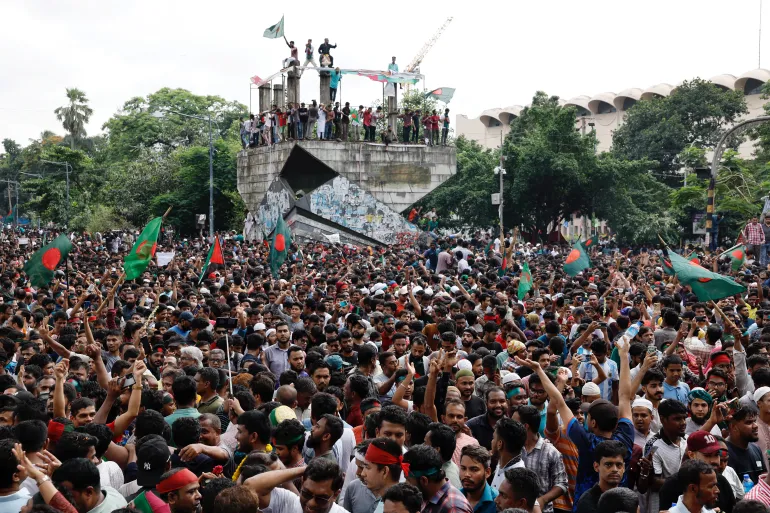Key Points
- Iran has confirmed “significant and serious damages” to its nuclear sites from recent U.S. airstrikes, but the full impact is debated.
- Research suggests the strikes set back Iran’s nuclear program, though estimates vary from years to months.
- It seems likely Iran will suspend IAEA cooperation, complicating global monitoring efforts.
- The evidence leans toward ongoing diplomatic talks, but Iran’s stance adds uncertainty to future agreements.
What we know about US strikes
Overview of Operation Midnight Hammer
On June 22, 2025, the U.S. launched Operation Midnight Hammer, targeting Iran’s nuclear facilities at Fordo, Natanz, and Isfahan with B-2 bombers and Tomahawk missiles. U.S. President Donald Trump claimed the sites were “completely and totally obliterated,” but assessments vary.
Confirmed Damage and Iran’s Response
Iran’s Foreign Minister Abbas Araghchi admitted on June 26, 2025, that the facilities suffered “significant and serious damages,” contradicting Supreme Leader Ayatollah Ali Khamenei’s earlier dismissal of the impact. Satellite imagery shows craters and blocked tunnels at Fordo, with extensive damage at Natanz and Isfahan, suggesting a setback to Iran’s nuclear program. However, Iran insists it can continue its activities, and a leaked U.S. report suggests the delay might be just a few months, not years.
IAEA Access and Cooperation
Iran is mulling ending cooperation with the International Atomic Energy Agency (IAEA), with its parliament approving a bill on June 25, 2025, to suspend all collaboration, including inspections. This move, driven by hard-liners, could limit the IAEA’s ability to monitor Iran’s 400 kilograms of enriched uranium—enough for nearly 10 nuclear bombs—and advanced centrifuges, raising global concerns about proliferation risks.
Diplomatic Efforts and Future Outlook
Despite the tensions, diplomatic talks are tentatively scheduled for next week, mediated by Qatar, with the U.S. expressing a commitment to peace. However, Iran’s Foreign Minister warned that “going through a war changes many realities,” suggesting diplomacy must adapt. The ceasefire, brokered on June 23, 2025, holds, but the lack of IAEA access adds uncertainty to achieving a lasting resolution.
Comprehensive Analysis: Operation Midnight Hammer and Its Implications
Introduction to the Conflict
Operation Midnight Hammer, executed on June 22, 2025, marks a significant escalation in the U.S.-Iran conflict, targeting three key nuclear facilities: Fordo, Natanz, and Isfahan. The operation involved 125 U.S. aircraft, including seven B-2 stealth bombers dropping 14 GBU-57 Massive Ordnance Penetrator (MOP) bombs—30,000-pound “bunker busters”—and Tomahawk missiles fired from a submarine, likely the USS Georgia. U.S. President Donald Trump hailed it as a “spectacular military success,” claiming the sites were “completely and totally obliterated.” However, the true impact and Iran’s response have introduced complexity, with Tehran confirming damage while threatening to end cooperation with the International Atomic Energy Agency (IAEA), raising global concerns about nuclear proliferation.
Detailed Damage Assessment
- Fordo: Buried 260 feet under a mountain near Qom, Fordo is a critical uranium enrichment facility. Satellite imagery from June 22, 2025, shows six fresh craters on the ridge, blocked tunnel entrances, and a layer of ash covering the area, as reported by CBS News. The damage is described as “extremely severe” by U.S. Gen. Dan Caine, but a leaked U.S. intelligence report suggests the underground structures may not be fully collapsed, potentially delaying the program by months rather than years.
- Natanz: Iran’s largest enrichment complex, previously hit by Israeli strikes on June 13, 2025, sustained a 5.5-meter diameter crater over its underground centrifuge halls, according to BBC News. The facility, crucial for uranium enrichment, shows significant structural damage, but Iran claims materials were evacuated beforehand.
- Isfahan: The nuclear technology center, including uranium conversion and storage facilities, was hit by approximately 12 Tomahawk missiles, with satellite images revealing multiple buildings reduced to rubble, as seen in CBS News. The extent of damage to enriched material storage tunnels is unclear, adding to the uncertainty.
| Facility | Damage Description | Impact Assessment |
|---|---|---|
| Fordo | Craters, blocked tunnels, ash layer | Severe, but underground impact uncertain |
| Natanz | 5.5m crater over centrifuge halls | Significant, prior Israeli damage noted |
| Isfahan | Buildings destroyed, tunnels hit | Extensive, storage facility impact unclear |
Iran’s Foreign Minister Abbas Araghchi, in a statement on June 26, 2025, confirmed “significant and serious damages,” contrasting with Supreme Leader Ayatollah Ali Khamenei’s earlier dismissal of U.S. claims as “exaggerated.” This admission aligns with Israeli Brig. Gen. Effie Defrin’s assessment that the program has been “set back by years,” though the leaked U.S. report suggests a shorter delay, highlighting a controversy in damage estimates.
Iran’s Nuclear Program and Material Concerns
A critical issue is the fate of Iran’s 400 kilograms of enriched uranium, enough for nearly 10 nuclear bombs if further processed, and its advanced centrifuges. Iran has not disclosed whether these materials were damaged or relocated, with satellite images from June 19, 2025, showing 16 cargo trucks at Fordo, suggesting possible evacuation
. The IAEA, which last verified this stockpile before the strikes, reported no increase in off-site radiation levels, but without access, verifying the status is challenging. Analysts like Sina Azodi from George Washington University believe Iran is using this ambiguity to its advantage, stating, “Iran wants to keep everything in the dark… to play the diplomatic game of poker,” as quoted by The New York Times.
Threat to IAEA Cooperation
Iran’s response includes a potential suspension of IAEA cooperation, formalized by a parliamentary bill approved on June 25, 2025, with no opposing votes, as reported by The Guardian. Araghchi warned that Iran’s relationship with the IAEA “will take a different shape,” and a visit by Director General Rafael Grossi “would not be welcomed.” This move, driven by hard-liners and approved by the Guardian Council, could end inspections and monitoring reports, limiting the IAEA’s ability to oversee Iran’s nuclear activities. Grossi has emphasized the urgency of resuming cooperation, stating on June 25, 2025, that inspectors are ready to return, as noted by CNN. This development has drawn global concern, with French President Emmanuel Macron urging the IAEA’s role in nuclear safety, as seen in his X post .
| IAEA Cooperation Status | Details |
|---|---|
| Current Status | Parliament approved suspension on June 25, 2025, no inspections allowed |
| IAEA Response | Grossi proposes meeting, emphasizes resuming monitoring, no radiation rise |
| Global Reaction | UK, France, Germany urge talks; UN calls it escalation |
Diplomatic Efforts and Ceasefire Dynamics
Despite the tensions, diplomatic efforts continue, with talks tentatively scheduled for next week, mediated by Qatar, as reported by IAEA. The White House, through Press Secretary Karoline Leavitt, reiterated on June 26, 2025, a commitment to diplomacy, stating, “The president wants peace… and we’re on a diplomatic path with Iran.” Special envoy Steve Witkoff is leading behind-the-scenes negotiations, supported by regional partners. However, Araghchi warned that “going through a war changes many realities… diplomacy must adjust,” indicating a hardening stance.
The U.S.-brokered ceasefire, announced on June 23, 2025, has held despite initial violations, including Israeli strikes on Fordo’s access routes and Iranian missile launches, as noted by CBS News. This ceasefire has eased global fears, with oil prices dropping and stock markets rallying, but Iran’s potential withdrawal from IAEA oversight could complicate long-term stability.
Unresolved Questions and Future Risks
Key uncertainties include the fate of Iran’s enriched uranium and centrifuges, the operational status of a reported new enrichment facility, and the long-term impact on Iran’s nuclear program. Without IAEA access, verifying these details is challenging, increasing proliferation risks. Ayatollah Ali Khamenei, in a televised speech on June 26, 2025, claimed victory, stating Iran “delivered a harsh slap to America’s face,” and reiterated no cooperation with the IAEA, as reported by NBC News. This stance, combined with Iran’s potential to accelerate nuclear work in secret, poses significant challenges for global security.
Targets Bombed by the US
The operation targeted three major nuclear facilities in Iran:
- Fordo – an underground uranium enrichment facility near Tehran
- Natanz – another major uranium enrichment center
- Isfahan – a site with key nuclear infrastructure
Weapons and Tactics Used
The US used a combination of aircraft and cruise missiles in a precisely coordinated assault:
- 125 US military aircraft participated
- 7 B-2 stealth bombers flew undetected into Iranian airspace to strike the sites
- 2 dozen cruise missiles were launched from a submarine, targeting the Isfahan site
- 75 total precision-guided weapons were used in the operation
Specific Weapons Used
- 14 GBU-57 Massive Ordnance Penetrators (MOPs) dropped on Fordo
- These are 30,000 lb (13,000 kg) “bunker buster” bombs
- Capable of penetrating up to 60 feet of concrete or 200 feet of earth
These MOPs are uniquely American and are the only weapons capable of reaching deep underground nuclear sites like Fordo.
Timing
Operation Midnight Hammer has inflicted notable damage on Iran’s nuclear facilities, with confirmed structural impacts at Fordo, Natanz, and Isfahan. However, Iran’s decision to suspend IAEA cooperation, formalized on June 25, 2025, introduces opacity, making it harder to monitor its nuclear activities. While diplomatic talks continue, the lack of transparency and Iran’s hardening stance could lead to further escalation, testing the fragile ceasefire and global efforts to prevent nuclear proliferation. As of June 27, 2025, the situation remains fluid, with the coming weeks critical for determining the path forward.
Strikes occurred between 22:40 and 23:05 GMT on Saturday




